Assessment of dengue mosquito breeding sources at Pulicat, Tamil Nadu, India
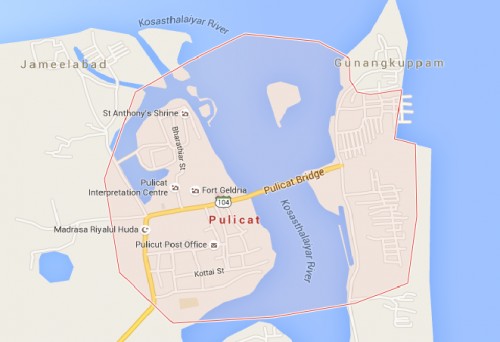 Fig. 1:
Fig. 1: Map from the region of Pulicat lake showing the distribution of main streets in Pulicat (left side of Pulicat bridge) and Vairavan Kuppam (right side of Pulicat bridge) © Google Maps, 2016
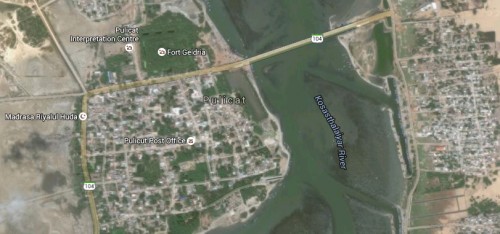 Fig. 2:
Fig. 2: Satellite view of Pulicat. Image shows distribution of water masses, households and forest in Pulicat and Vairavan Kuppam © Google Maps, 2015
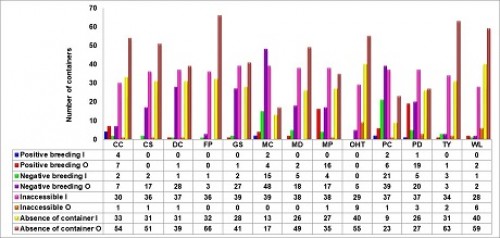 Fig. 3:
Fig. 3: Number of larvae and/or pupae present, absent and inaccessible in containers in the 69 surveyed households. Each container type shows the result of indoors (I) and outdoors (O) survey. Container type: CC
- cement cistern; CS
- coconut shell; DC
- discarded container; FP
- flower pot; GS
- grinding stone; MC
- metal container; MD
- metal drum; MP
- mud pot; OHT
- overhead tank; PC
- plastic container; PD
- plastic drum; TY
- tyre; and WL
-well
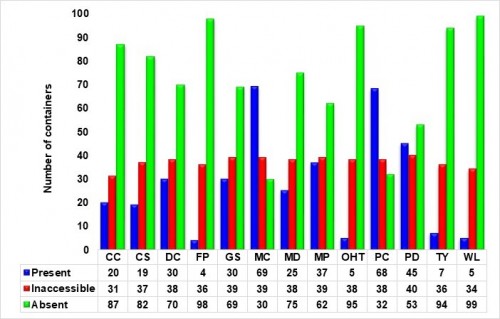 Fig. 4:
Fig. 4: Number of larvae and/or pupae present, absent and inaccessible in containers in the 69 surveyed households. Each container type shows the combined result of indoors and outdoors survey. Container type: CC
- cement cistern; CS
- coconut shell; DC
- discarded container; FP
- flower pot; GS
- grinding stone; MC
- metal container; MD
- metal drum; MP
- mud pot; OHT
- overhead tank; PC
- plastic container; PD
- plastic drum; TY
- tyre; and WL
-well
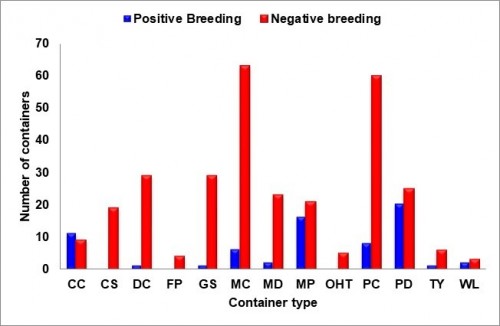 Fig. 5:
Fig. 5: Number of containers in which larvae and/or pupae were present, and number of containers in which breeding was not found (results for the total 69 surveyed households). Container type: CC
- cement cistern; CS
- coconut shell; DC
- discarded container; FP
- flower pot; GS
- grinding stone; MC
- metal container; MD
- metal drum; MP
- mud pot; OHT
- overhead tank; PC
- plastic container; PD
- plastic drum; TY
- tyre; and WL
-well
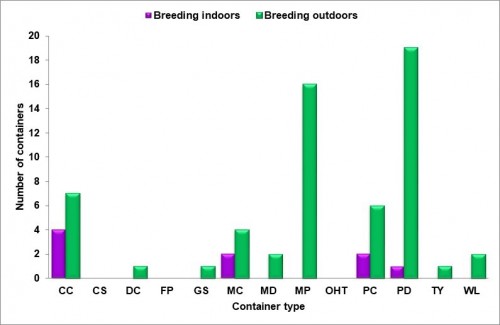 Fig. 6:
Fig. 6: Number of containers showing presence of larvae and/or pupae. Comparison between breeding indoors and outdoors. Container type: CC
- cement cistern; CS
- coconut shell; DC
- discarded container; FP
- flower pot; GS
- grinding stone; MC
- metal container; MD
- metal drum; MP
- mud pot; OHT
- overhead tank; PC
- plastic container; PD
- plastic drum; TY
- tyre; and WL
-well
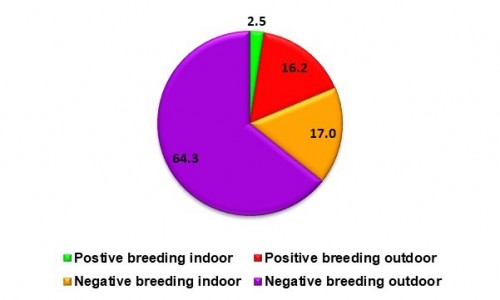 Fig. 7:
Fig. 7: Per cent distribution of breeding in observed water containers, with distinction between indoors and outdoors (total positive = 18.7%). Values correspond to the total number of containers with larval/pupal presence in the 69 households
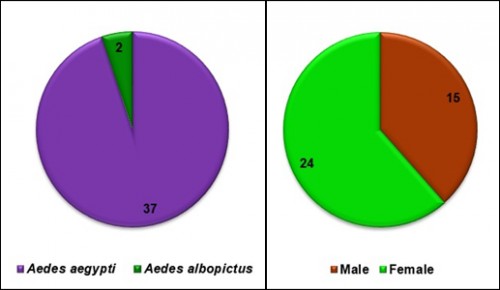 Fig. 8:
Fig. 8: Species and sex composition of sampled adult mosquitoes in the study area









